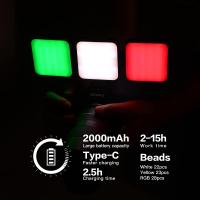Monocular Antibody How It Works ?
A monoclonal antibody is a laboratory-produced molecule that can mimic the immune system's ability to fight off harmful pathogens such as viruses or cancer cells. It is designed to target a specific protein or antigen on the surface of these cells, which allows it to bind to them and trigger an immune response.
Monoclonal antibodies are created by fusing a single type of immune cell with a cancer cell to create a hybrid cell that can produce large quantities of identical antibodies. These antibodies can then be purified and used as a therapeutic agent to treat a variety of diseases, including cancer, autoimmune disorders, and infectious diseases.
When a monoclonal antibody is administered to a patient, it circulates in the bloodstream and binds to the target antigen on the surface of the cells. This binding can trigger a variety of immune responses, including the destruction of the targeted cells by the immune system or the blocking of specific cellular pathways that are necessary for the survival of the cells.
Overall, monoclonal antibodies are a powerful tool in the fight against disease, and their ability to target specific cells and pathways makes them a promising avenue for the development of new therapies.
1、 Antibody Structure and Function
Monoclonal antibodies are laboratory-produced molecules that can mimic the immune system's ability to fight off harmful pathogens. They are designed to target specific proteins on the surface of cells, which can be used to diagnose and treat a variety of diseases, including cancer, autoimmune disorders, and infectious diseases.
The structure of a monoclonal antibody consists of two heavy chains and two light chains, which are linked together by disulfide bonds. The variable regions of the antibody, located at the tips of the heavy and light chains, are responsible for binding to specific antigens.
When a monoclonal antibody encounters its target antigen, it binds to it with high specificity and affinity, triggering a series of immune responses that can lead to the destruction of the target cell. This can occur through a variety of mechanisms, including complement activation, antibody-dependent cellular cytotoxicity, and direct inhibition of cell signaling pathways.
Recent advances in monoclonal antibody technology have led to the development of more potent and specific molecules, such as bispecific antibodies and antibody-drug conjugates. These molecules have the potential to revolutionize the treatment of cancer and other diseases by targeting multiple pathways simultaneously and delivering potent cytotoxic agents directly to cancer cells.
Overall, monoclonal antibodies represent a powerful tool for the diagnosis and treatment of a wide range of diseases, and ongoing research is likely to uncover new applications and mechanisms of action for these versatile molecules.
2、 Monoclonal Antibodies Production and Applications
Monoclonal antibodies (mAbs) are laboratory-produced antibodies that are designed to target specific antigens. They are produced by cloning a single type of immune cell, known as a B cell, that produces a specific antibody. This process results in a large number of identical antibodies that can be used for a variety of applications, including diagnostic tests and therapeutic treatments.
The production of monoclonal antibodies involves several steps. First, an antigen is identified and purified. Next, a mouse or other animal is immunized with the antigen to stimulate the production of B cells that produce antibodies against the antigen. The B cells are then harvested and fused with a myeloma cell, which is a type of cancer cell that can divide indefinitely. The resulting hybrid cells, known as hybridomas, are screened to identify those that produce the desired antibody. These hybridomas are then cloned to produce a large number of identical cells that can be used to produce large quantities of the antibody.
Monoclonal antibodies have a wide range of applications in medicine, including the treatment of cancer, autoimmune diseases, and infectious diseases. They can be used to target specific cells or molecules in the body, which can help to reduce side effects and improve treatment outcomes. For example, monoclonal antibodies can be used to block the activity of cancer cells or to stimulate the immune system to attack cancer cells. They can also be used to neutralize viruses or bacteria, preventing them from infecting cells.
In recent years, there has been a growing interest in the use of monoclonal antibodies for the treatment of COVID-19. Several monoclonal antibodies have been developed that target the spike protein of the SARS-CoV-2 virus, which is responsible for infecting cells. These antibodies have shown promising results in clinical trials, and some have been granted emergency use authorization by regulatory agencies.
3、 Mechanisms of Monoclonal Antibody Action
Monoclonal antibodies (mAbs) are laboratory-produced molecules that mimic the immune system's ability to fight off harmful pathogens. They are designed to target specific proteins on the surface of cells, which can be used to treat a variety of diseases, including cancer, autoimmune disorders, and infectious diseases.
The mechanism of action of mAbs involves binding to specific antigens on the surface of cells, which can trigger a range of immune responses. For example, some mAbs can block the activity of certain proteins, while others can stimulate the immune system to attack cancer cells.
One of the key advantages of mAbs is their specificity, which allows them to target only the cells or proteins that are causing the disease. This reduces the risk of side effects and makes them more effective than traditional chemotherapy drugs.
Recent advances in mAb technology have led to the development of new types of mAbs, such as bispecific antibodies, which can bind to two different antigens at the same time. This allows them to target multiple pathways involved in disease progression, making them more effective than traditional mAbs.
Overall, the mechanism of action of mAbs is complex and varies depending on the specific antibody and disease being treated. However, their ability to target specific cells and proteins makes them a promising tool for the treatment of a wide range of diseases.
4、 Pharmacokinetics and Pharmacodynamics of Monoclonal Antibodies
Monoclonal antibodies are laboratory-produced molecules that mimic the immune system's ability to fight off harmful pathogens. Monoclonal antibodies are designed to target specific proteins on the surface of cells, which can be used to treat a variety of diseases, including cancer, autoimmune disorders, and infectious diseases.
Monoclonal antibodies work by binding to specific proteins on the surface of cells, which can either block the function of the protein or trigger an immune response against the cell. This can lead to the destruction of cancer cells or the suppression of an overactive immune system in autoimmune disorders.
The pharmacokinetics of monoclonal antibodies refers to how the body processes and eliminates the drug. Monoclonal antibodies are typically administered intravenously and have a long half-life, which means they remain in the body for an extended period. This allows for less frequent dosing and can improve patient compliance.
The pharmacodynamics of monoclonal antibodies refers to how the drug interacts with the target protein and the resulting biological effects. Monoclonal antibodies can have a variety of mechanisms of action, including blocking the function of the target protein, triggering an immune response, or delivering a toxic payload to the cell.
Recent advances in monoclonal antibody technology have led to the development of more targeted and potent therapies. For example, bispecific antibodies can bind to two different proteins simultaneously, allowing for more precise targeting of cancer cells. Additionally, antibody-drug conjugates combine the specificity of monoclonal antibodies with the cytotoxic effects of chemotherapy drugs, resulting in a more potent and targeted therapy.
Overall, monoclonal antibodies have revolutionized the treatment of many diseases and continue to be an area of active research and development.































There are no comments for this blog.